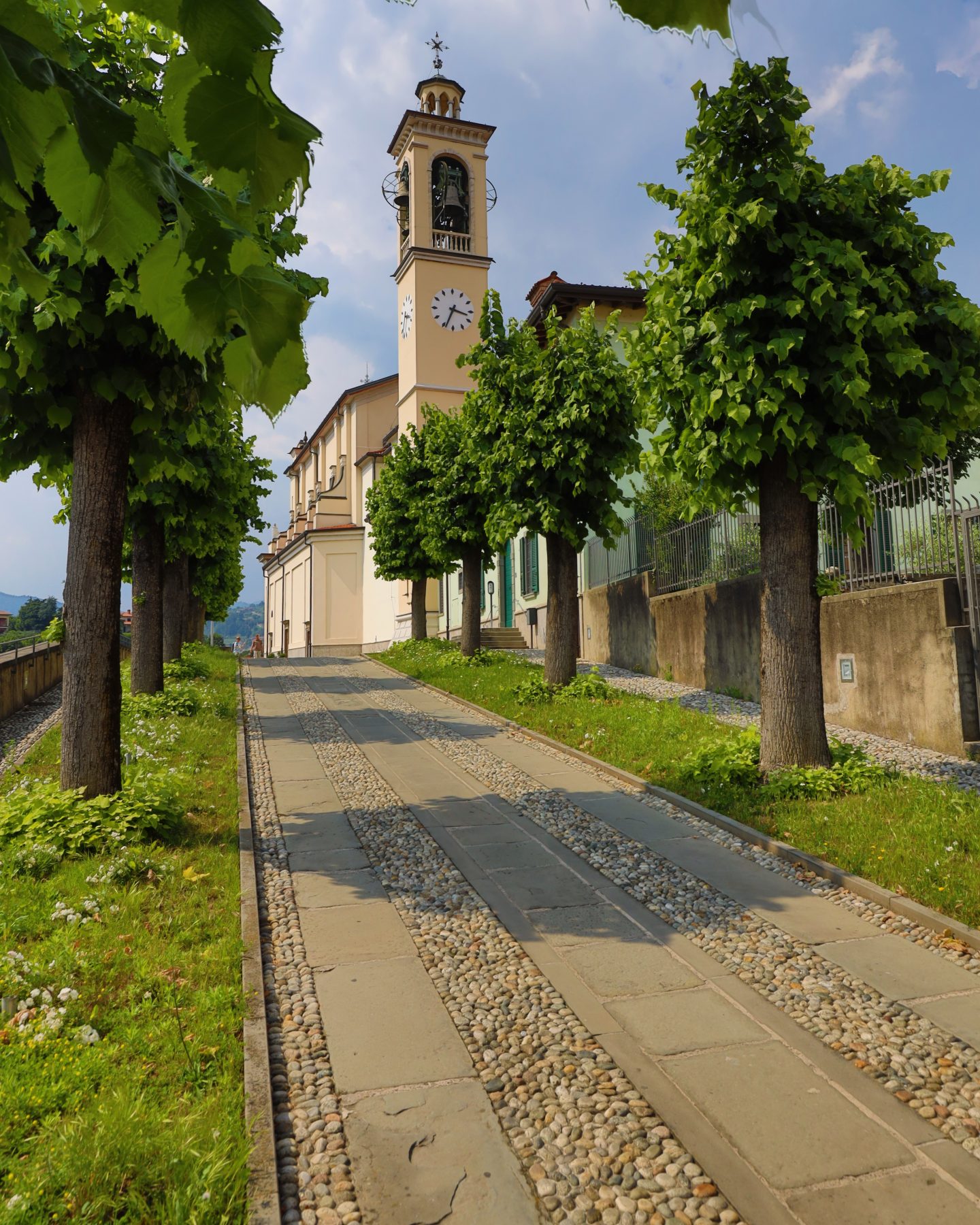
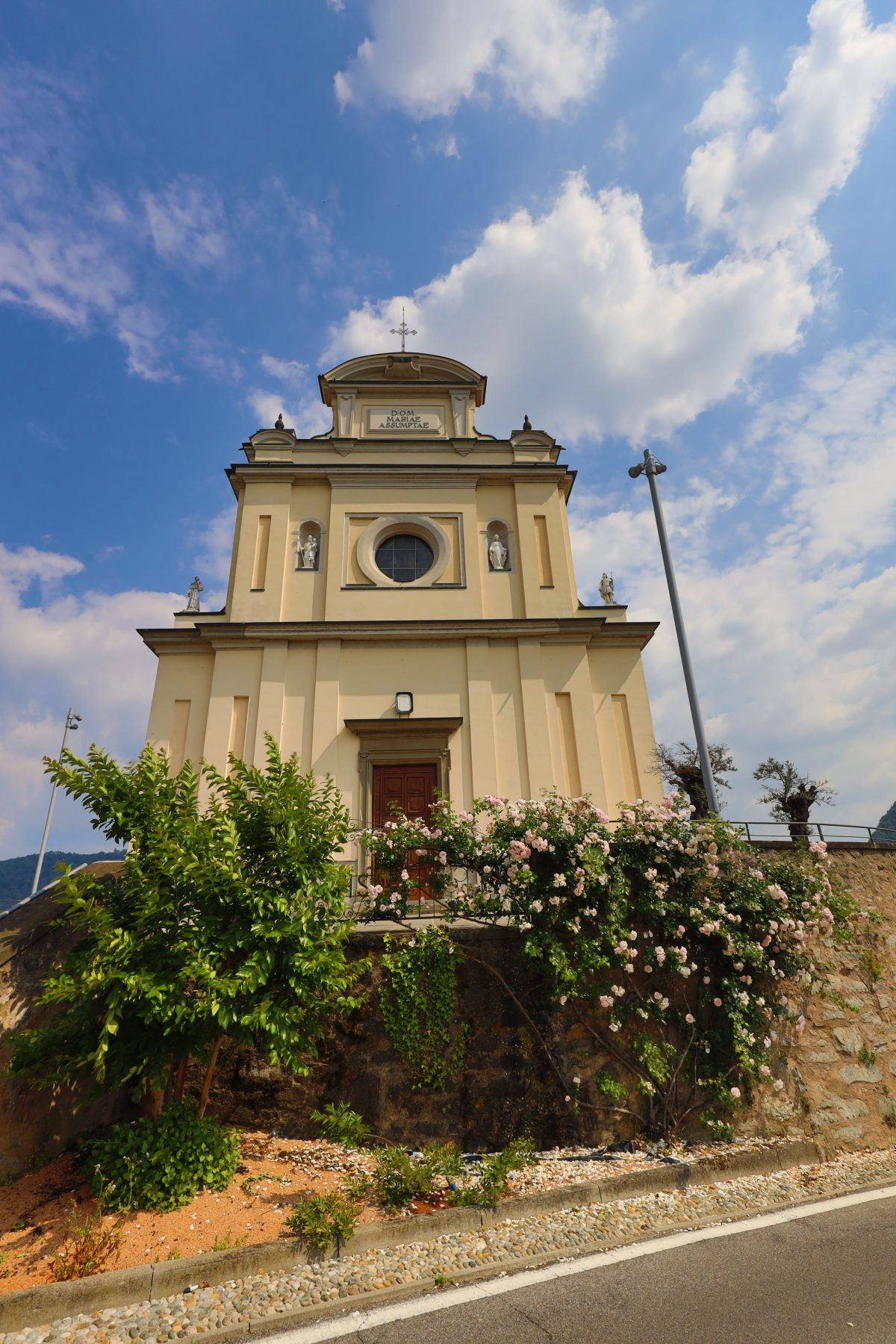
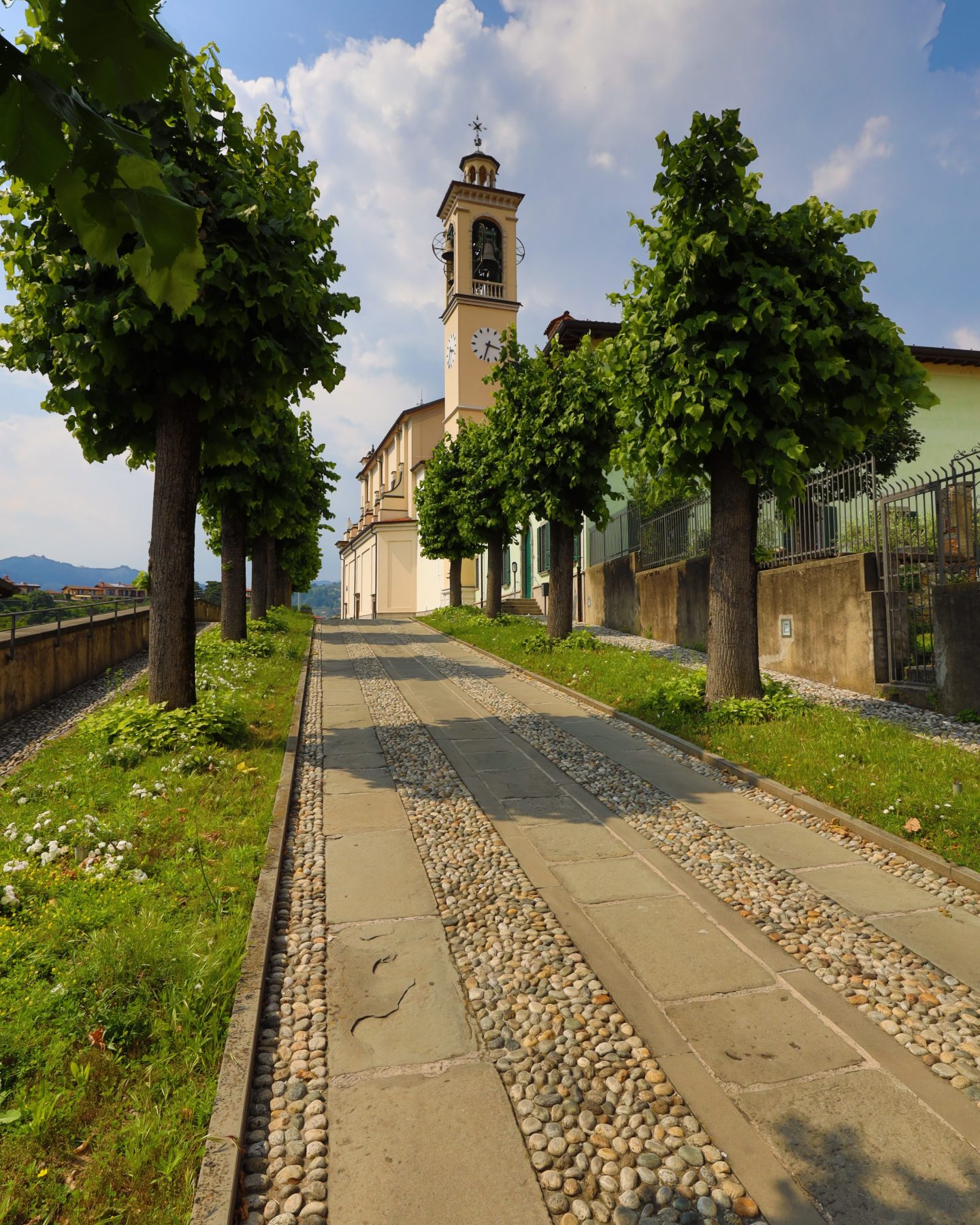
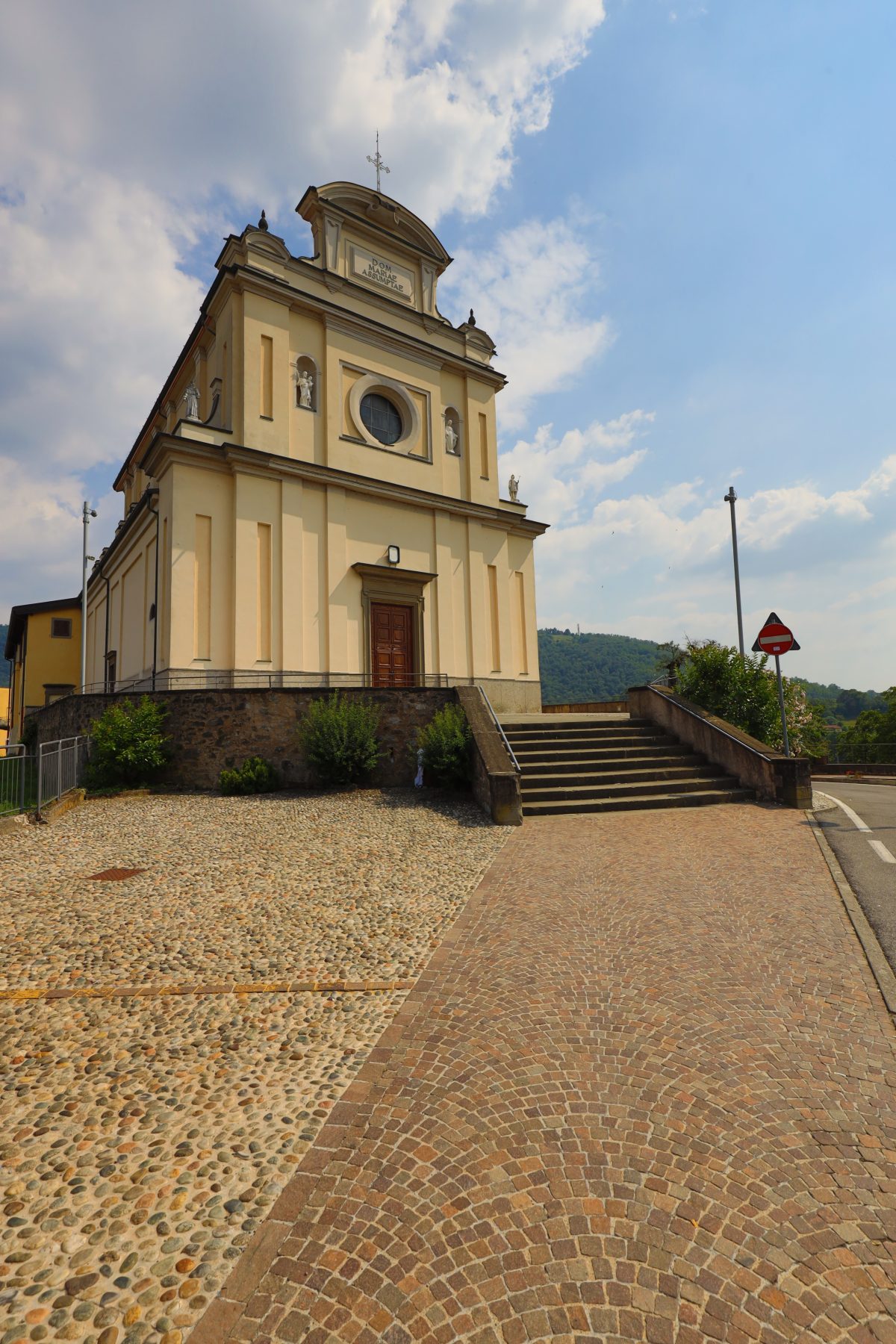
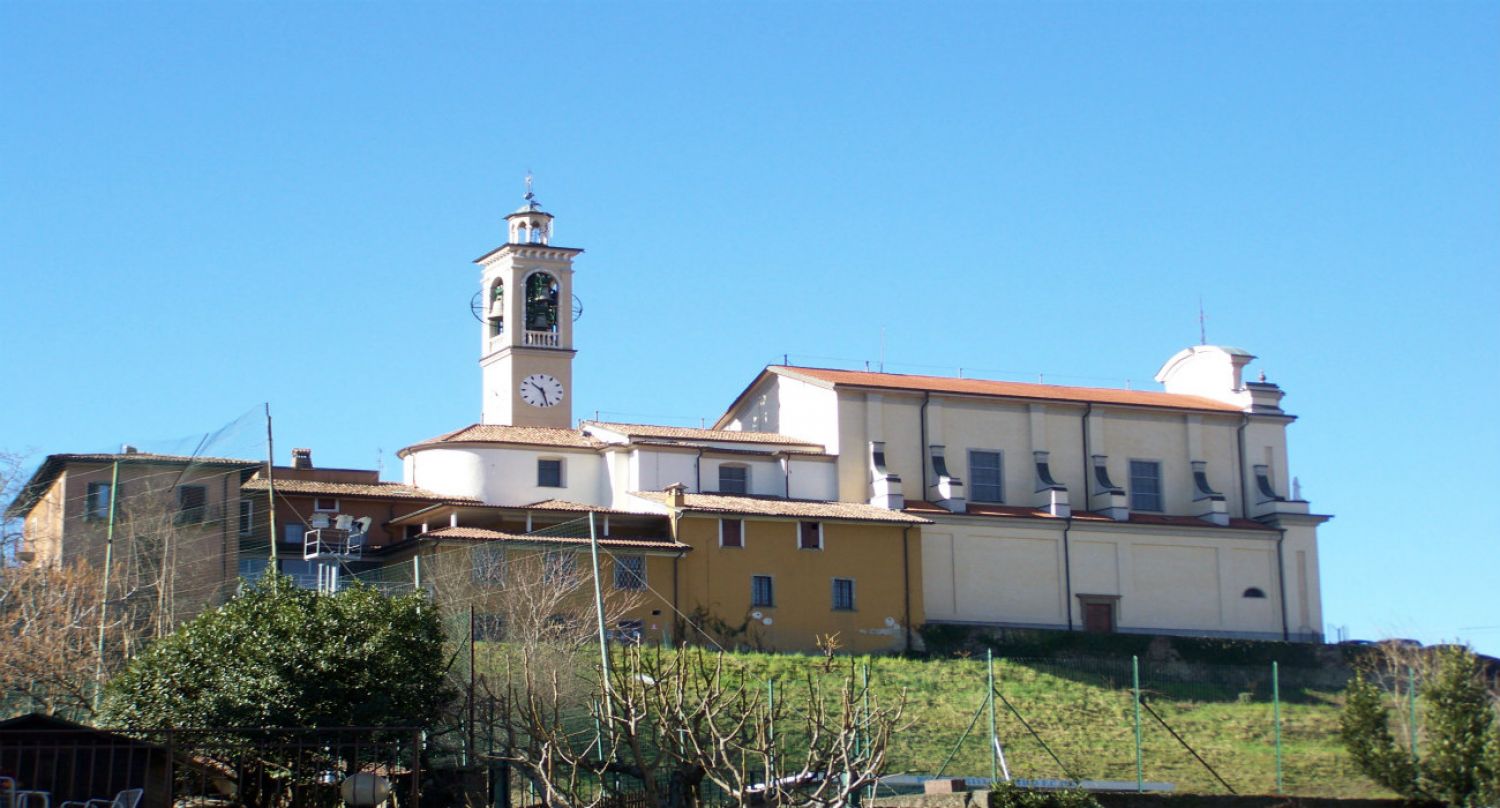
Church of Santa Maria Assunta
The parish church of Santa Maria Assunta (St. Mary of the Assumption) is located on a hilltop in the centre of Paratico. St. Mary’s is remembered among the Bergamo diocese churches since 1260, but what we see today is the result of an architectural project which began in 1894 and terminated in 1904 by Virginio Muzio, one of the most reputed professionals in Lombardy at the time. The history of this building is, however, much more complicated and difficult. It has certainly more ancient origins (perhaps around the 13th Century), as evidenced by the complex superimposition of different phases in the sanctuary: the two pointed arches belong to a late medieval phase, incorporated into later structures; what remains of the 16th Century church, described in the reports of the pastoral visit of St. Charles Borromeo in 1575, is the fresco depicting the Coronation of the Virgin inside the faux dome. In 1650 the church suffered some damage after a fire and was rebuilt, at least in part, in 1724.
The façade is divided into two orders. In the lower order we can see the alternating of slightly overhanging pillar strips and concave panels resting on a Poltragno stone plinth. At the centre, framed by a sandstone frame, there is the portal with two doors, the work of the early 20th Century local craftsman Giuseppe Selogni. There is a circular window in the centre of the upper order, inscribed within a frame and flanked by two niches with statues of St. Joseph and the Madonna. The two orders are then completed by a third structure surmounted by a curved gable, in the centre of which the marble plaque with the dedication of the church to Mary of the Assumption can be observed. The square shaped bell tower has a large belfry housing the eight bells consecrated in 1983.
The spacious interior of the church has a single nave, interspersed by pillar strips ending in a long, articulated sanctuary; the opulent decoration of the vault is the work, in 1903, of Giovanni Ferraboschi for the decorative parts and Rodolfo and Luigi Gambini for the figures in the nave and the sanctuary. In the nave there is a remarkable side altar in black marble dedicated to Our Lady of the Rosary: it is possible that it was made for the 1724 church. The side marble statues of St. Dominic and St. Catherine, sinuous and refined, suggest the presence of the Fantoni workshop, who signed a contract for the altar in 1763. The statue of the Madonna of 1925, is the work of the artisti Virgilio Vavassori.
The sanctuary consists of architectural elements dating to various periods and occupies the sanctuary prior to the reconstruction in 1724 and part of the 18th Century nave. In the vault above the altar, there is a fresco of the Coronation of the Virgin dating back to the early 17th Century, which seems to have been influenced by the artistic culture of the Malosso workshop. The altarpiece at the end of the apse, a large Assumption of the Virgin painted by Riccardo Simoncelli in 1711, also dates back to the most ancient church.
The high altar is a work of remarkable prestige, and presents the elements of the altar built in the 18th Century in an adaptation made perhaps in around 1878. The door of the silver tabernacle, gilded (?) and embossed depicts the Risen Christ appearing to Saints Peter and Paul and is signed by Domenico Arici in 1749, the same date is also assigned to the tribune – or ciborium – and inlaid steps above the table, which can be attributed to the Vincenzo Baroncini workshop from Brescia. The two splendid side Angels by Alessandro Calegari are also dated at around 1749.
The 18th Century church also features the fresco of the Madonna and Child with Saints Anthony, Bernard and Firmus, within a plaster frame. The painting was perhaps part of a side altar dedicated to St. Anthony of Padua, as suggested by the stories painted around the altarpiece. The stylistic context is probably of Bergamo origin by Tiepolo influenced artists such as, for example, Giovanni Raggi.
Massimo Rossi












